
Transforming Education with Surface For Education: Across the globe, teachers, students, and parents are dealing with a new reality: how to adapt to an educational environment that has moved from the classroom to the internet. Transforming the classroom from a physical space to a digital space can be a challenge. It requires new skills and the ability to rethink the way we approach teaching and learning.
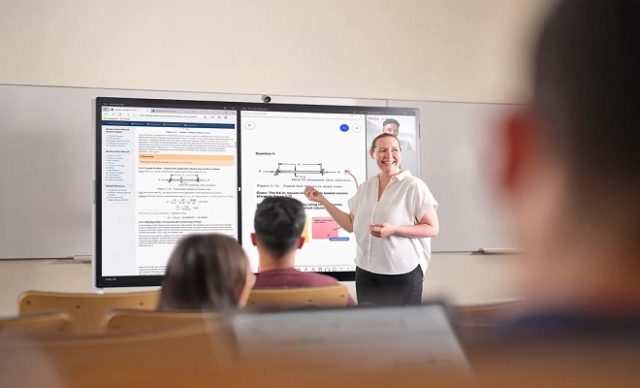
Modern Education Meets Modern Devices
Transforming Education with Surface: Unlocking A New Pedagogical Style
Transforming Education with Surface: Teaching Observational Techniques
Microsoft Surface For Education: Engaging with Online Learning
Transforming Education with Surface Even More
The digital transformation of learning is an important part of delivering both academic excellence and an enhanced student experience. This is why several schools within the prestigious Newcastle University in England took the decision to provide their undergraduates with Microsoft Surface Go devices. These mobile, two-in-one devices operate as a secondary device when working in high-performance computer labs, an essential mobile device during field and lab work, and are helping to ensure equity of opportunity and access to learning for all.
Microsoft Surface For Education is bringing the classroom into the digital world without disrupting tried-and-tested teaching methods, rather opening up a whole new level of possibilities in the process. Being digitally capable is a core competency within Newcastle University’s Graduate Framework. While students begin university life at a range of levels, all will leave with strong digital competency. By giving them a device, it allows lecturers to ensure they are training students to acquire that digital capability.
With varying levels of computer literacy, some students have never used programs such as Microsoft Excel before, but need to have their skills in statistics and data handling developed. Teaching data methodologies, while each student has the practical tools right in front of them, makes this process much more effective. The same principle applies to all subject areas and the relevant digital applications they make use of. At the same time, lecturers are introducing new digital tools to enhance the classroom experience and move from a didactic approach to a more dialogic teaching style, with discussion and debate forming the basis of the classroom experience.
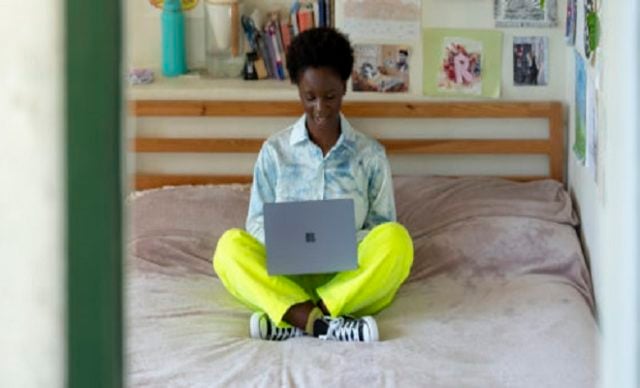
One innovation that is transforming education with Surface is the use of real-time feedback software and interactive presentation software. This is used for revision sessions, to check understanding during sessions and for benchmarking, feedback and evaluation in a lecture setting, ensuring that each student benefits as much as possible from the simulated real-time interaction of a physical classroom or lecture hall.
Using these tools gives students a way to answer anonymously – whether with multiple choice answers or to type freely to generate word clouds. Because it’s anonymised, it takes away any anxiety around answering – especially when there are large cohorts. More comprehensive feedback such as this allows the faculty to adapt the session, post additional content to the Virtual Learning Environment or develop content further in the next session. This approach also allows students to be actively involved in the teaching process which they may have had limited ability to access previously, due to being shy, embarrassed, or afraid of giving a wrong answer.
“One of the things we’re really keen to do is to teach observational techniques,” explains Dr Sara Marsham, Acting Dean of Education. “It’s really important that students learn to understand the environment they are working in. Even if they are taking a digital image of the field site, they need to know how to annotate a picture and to think about which pictures they need to take.”
Training students to use their devices in the right way requires a change to educational approaches, transforming education with Surface to a model which focuses on coaching students to develop intellectual and conceptual flexibility, which is the foundation of any problem-solving mindset. Not only does it impart problem-solving skills to students—an intellectual ability that is of critical importance in the world of work and adult life—it allows them to learn how to move conceptually between details and the big picture when studying an organism, phenomenon, or problem. Students have repeatedly reported the value and ease of use of the Microsoft Surface Pen which allows them to combine and safely store their own notes and drawings with the learning materials that are in digital format.
“Having the Microsoft Surface has been so beneficial,” emphasises Dr. Marsham. “While the old devices were good for looking at presentations and videos online, they weren’t as good for taking notes. The Microsoft Surface devices have the keyboard and the Microsoft Surface Pen, so it’s really helped a lot of students. It makes doing coursework and making notes a lot easier.”
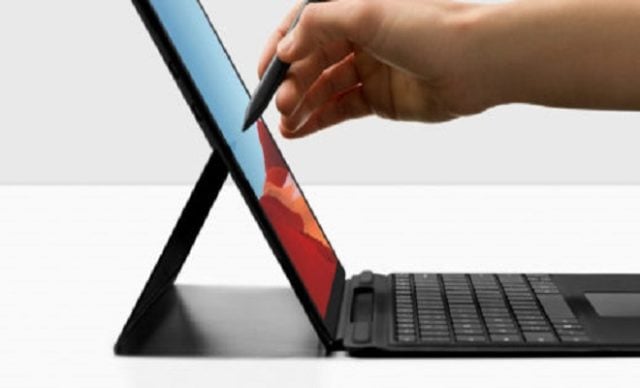
“As a Microsoft device, it’s compatible with all our on-campus systems,” she adds. “That’s really helped with students accessing their files, course content, and to compare and share notes with each other and with their teachers. With the previous devices, there was often issues with accessing files or uploading them to the virtual learning environment, especially if they were in a lab or in the field. Now, we’ve eliminated a lot of those issues and that integration with Microsoft 365 is really useful.”
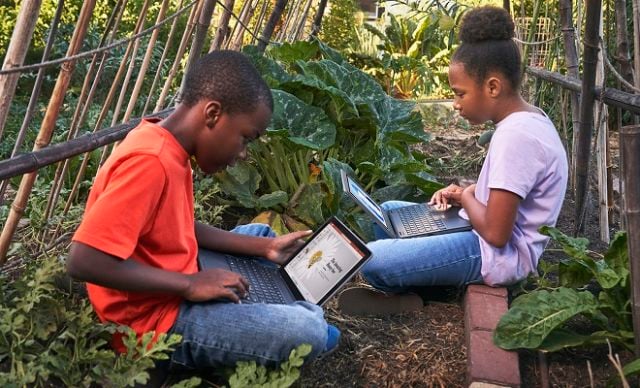
The university staff at large has commented on how transforming education with Surface has enhanced the educational experience of both students and teachers alike, enabling a level of engagement that wasn't possible before.
When COVID-19 meant everyone was suddenly working from home in 2020, business, life, and education had to continue to maintain societal and economic stability. Classes and lectures had to be delivered to students somehow, and the capabilities of ICT to connect people and transfer information online was the infrastructure that allowed our most vital societal processes to continue. “Our libraries and PC clusters were closed, so students couldn’t come onto campus to access PC provision,” explains Dr. Marsham. “Because we’d given everyone a Microsoft Surface, they could log in to the online sessions we were running. I know of many students for whom it was their only device. Even those who had another device found it really beneficial because they didn’t have to switch between screens.”
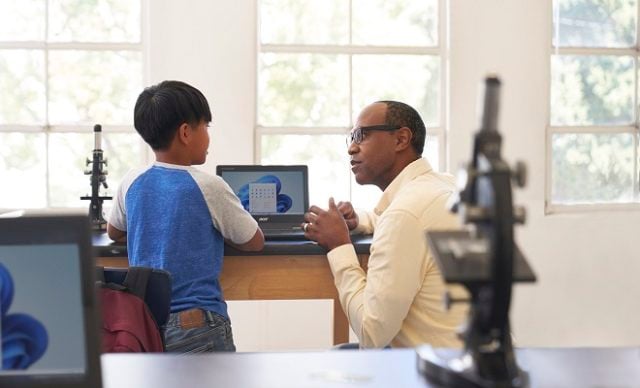
Dr. Mark Ferrar adds, “During COVID-19, we purchased around 400 laptops for students who were in desperate need but who could not afford a device. We’d eliminate this cost if all our undergraduates received a Microsoft Surface. And students affected by financial difficulties never need to experience that problem again.”
“The students of the School of Science, Agriculture, and Engineering were fortunate they could benefit,” agrees Professor Stuart Edwards.
The university community spent the summer of 2020 upskilling. Since then, the faculty has created a wealth of virtual learning resources including virtual fieldwork environments and virtual laboratory practicals.
“Previously, we had resource packs that we printed off for the students and handed out in the session,” notes Dr. Marsham. “By having the devices, we’ve been able to move all those resources online. It’s made it easier for students to engage with them prior to the session, so they can do preparatory work. It saves us printing thousands of pages. But also, within those sessions, they can find additional resources during the session and we can support them in that. For example, using Google Scholar and using the library database. Because they aren’t just reading pre-printed paper notes, that time we have with them is a much more valuable learning experience. They are learning skills and using tools that will be useful in their degree and, going forward, in their careers.”
Since the launch of the Surface Go, Microsoft has introduced the Surface Go 2 and the Surface Laptop SE, all uniquely suited to digital education, capable of running Windows 364, Windows 10, and Windows 11, with processing speeds that are more than adequate for the virtual education and collaboration sessions students engage in, and plenty of memory to store learning materials, class-notes, diagrams, reference articles, videos, and assignments.
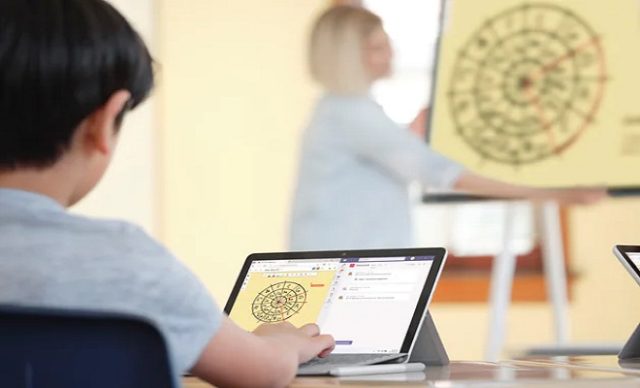

© Copyright 2024 Tarsus Distribution